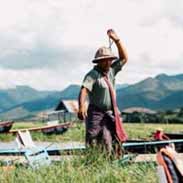Tigris Euphrates River Flashcards, test questions and answers
Discover flashcards, test exam answers, and assignments to help you learn more about Tigris Euphrates River and other subjects. Don’t miss the chance to use them for more effective college education. Use our database of questions and answers on Tigris Euphrates River and get quick solutions for your test.
What is Tigris Euphrates River?
The Tigris and Euphrates Rivers have played an important role in the history of many civilizations situated within their watersheds. For thousands of years, these rivers have been used to irrigate crops, sustain livestock, supply drinking water, and support transportation and trade. The ancient cities of Babylon, Uruk, Ur, Assur and Nineveh all flourished along the banks of the Tigris-Euphrates River system. The two rivers originate from separate sources in the mountains of Turkey before meeting at the headwaters near Al Khidr in Iraq. From there they flow southward for about 1,100 miles through Iraq and into the Persian Gulf. In addition to providing a source for food production and transport for early civilizations living in its catchment area, these two rivers played an important role as a boundary between Mesopotamia (modern day Iraq) and other areas such as Assyria or Babylon. This allowed different cultures to develop independently in areas separated by either river while still trading with one another via their shared waters. Today both rivers remain important sources of water for Iraq’s population which is estimated at around 30 million people; however decades of overexploitation have taken their toll on both rivers’ health due to agricultural runoff leading to soil degradation as well as political conflict leading to overuse during times of drought. In addition pollution from sewage outflows has caused further damage to aquatic life inhabiting these waters making them unsuitable for drinking or swimming by humans or animals alike. Despite all this environmental degradation however it is still possible that with proper management plans put into action both rivers can be restored back to their former glory giving future generations a chance at utilizing the same benefits that so many past civilizations had enjoyed from them: sustenance from fishing/farming activities; economic growth through transportation/trade opportunities; social connections through shared cultural symbols like temples or monuments; spiritual connections with nature through pilgrimage sites along its banks; etc In short no matter how dire our current situation may seem when it comes to restoring balance between human needs/activities & natural resources if we can learn anything from our ancestors it is that by working together we can create a better future than what we currently see today.









